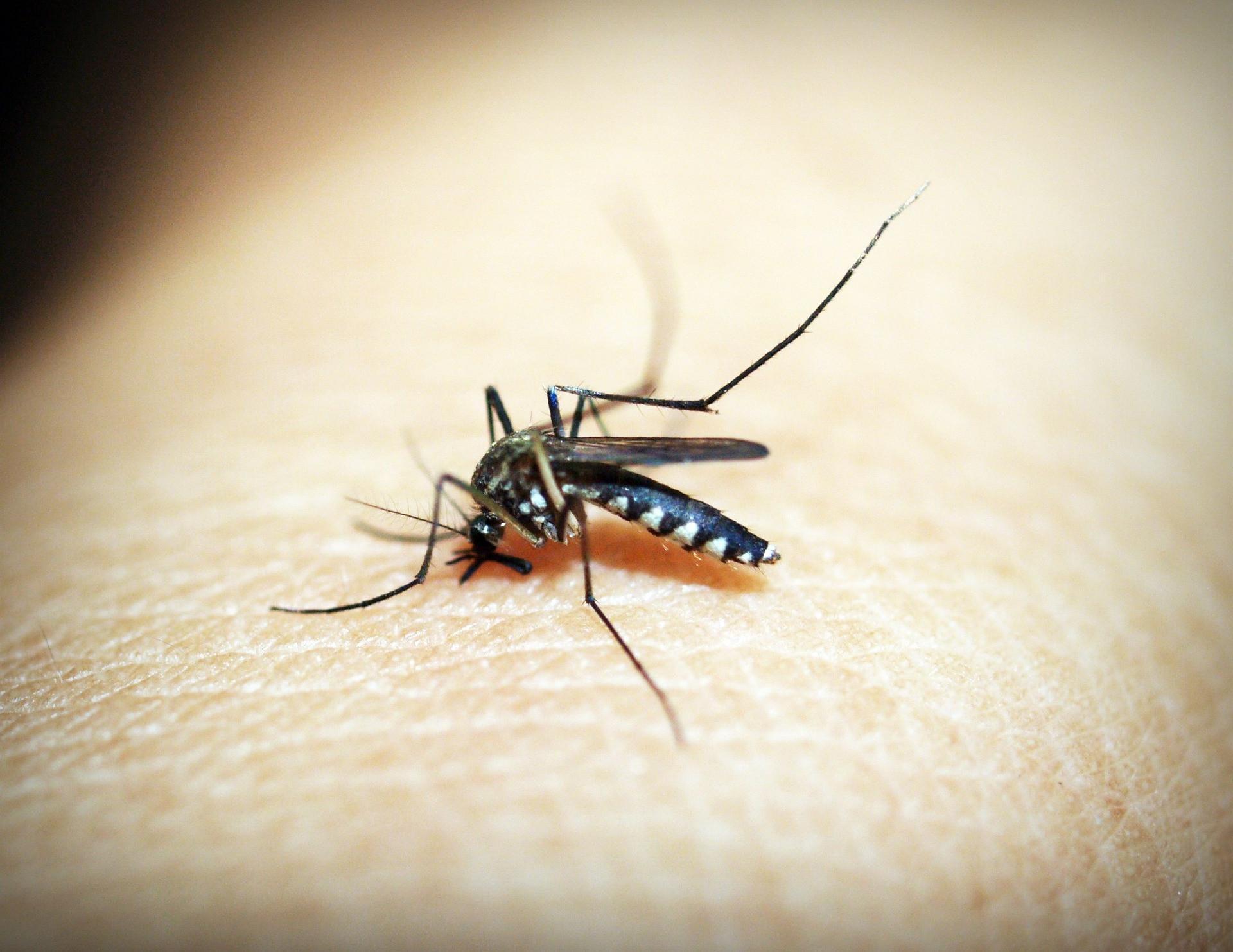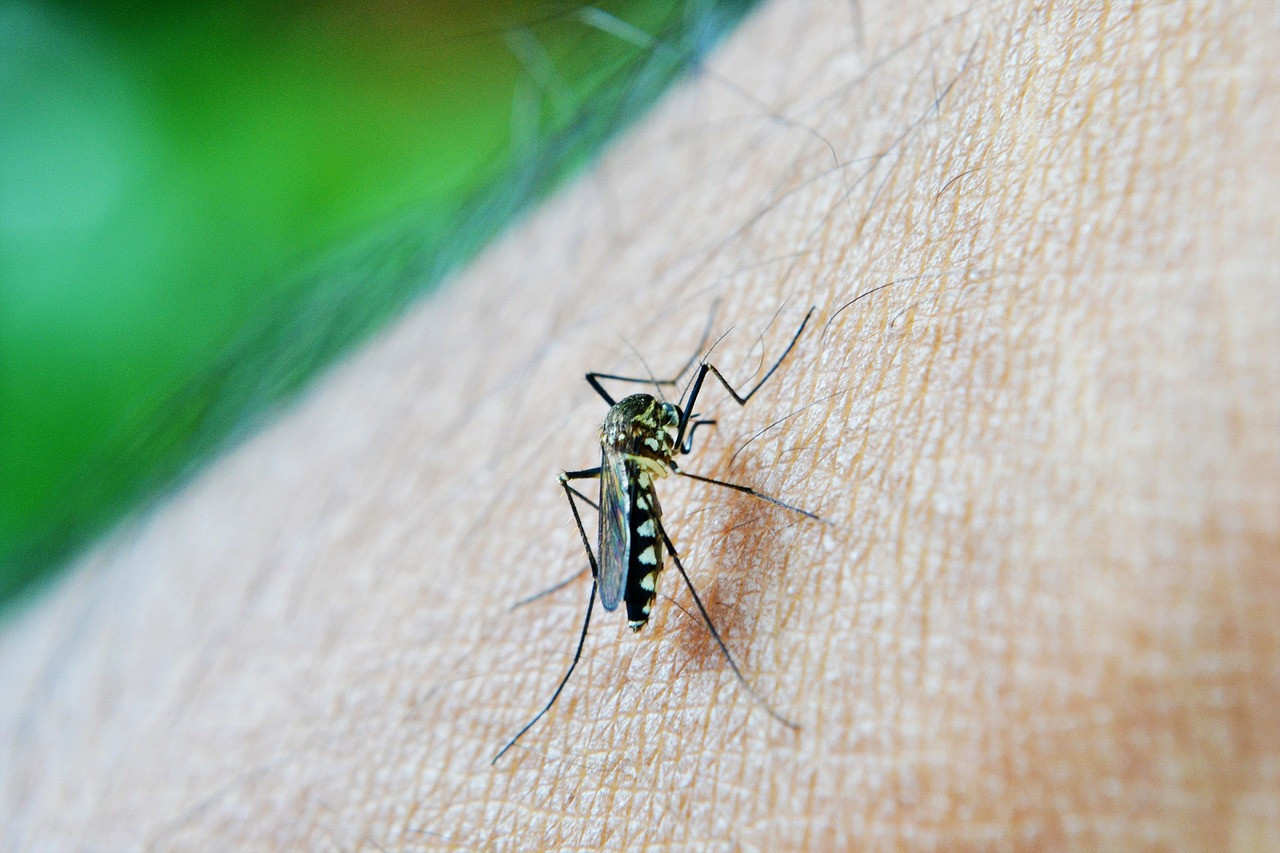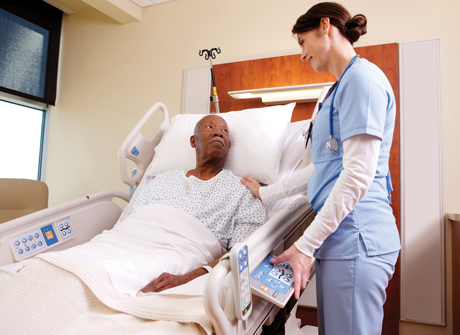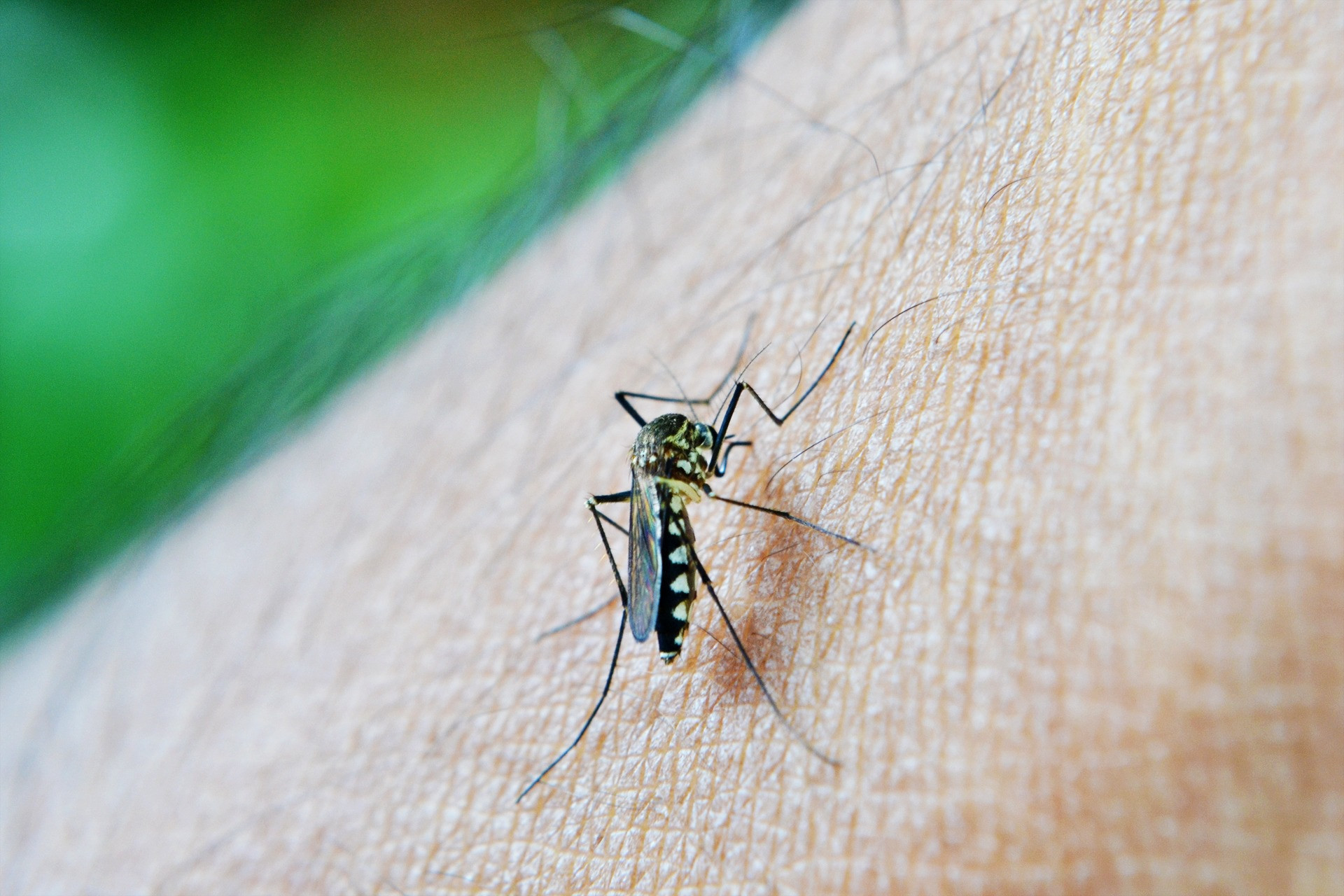Definisi
Chikungunya merupakan virus yang dapat menyebar dengan jenis nyamuk yang sama dengan menyebarkan demam dengue dan virus Zika. Virus Chikungunya masuk ke dalam golongan keluarga Togaviridae. Chikungunya dikategorikan dalam penyakit tropikal karena hanya terdokumetasi di Afrika. Asia dan India. Istilah Chikungunya berasal dari bahasa Makonde Afrika yang berarti menekuk dalam nyeri.
Virus ini menular ke manusia melalui gigitan nyamuk Aedes Aegypti atau Aedes Albopictus. Chikungunya dapat menular dari ibu hamil ke bayinya walaupun jarang terjadi. Chikungunya tidak dapat menyebakan kematian, tetapi dapat memberikan rasa nyeri yang berlangsung lama.
Penyebab
Chikungunya disebabkan oleh virus Chikungunya yang ditularkan dari gigitan nyamuk Aedes aegypti atau Aedes albopictus. Kedua nyamuk tersebut merupakan jenis nyamuk yang juga dapat menularkan penyakit demam berdarah dan virus Zika.
Nyamuk Aedes mendapatkan virus Chikungunya dengan mengigit seseorang yang telah terinfeksi sebelumnya dan penularan berikutnya terjadi bila orang lain digigit oleh nyamuk tersebut. Namun, virus Chikungunya hanya dapat menular melalui gigitan nyamuk dan tidak dapat menyebar secara langsung dari manusia ke manusia lain.
Mau tahu informasi seputar penyakit demam berdarah? Cek di sini, ya!
Faktor Risiko
Semua orang memiliki risiko untuk terinfeksi virus Chikungunya tetapi bayi baru lahir, orang lanjut usia di atas 65 tahun ke atas dan orang dengan kondisi medis lain seperti hipertensi, diabetes dan penyakit jantung memiliki risiko lebih tinggi untuk terserang chikungunya.
Gejala
Gejala dari chikungunya muncul 3 hingga 7 hari setelah ditularkan oleh nyamuk yang terinfeksi. Pada pasien yang terinfeksi akan muncul gejala. Beberapa gejala umum yang dirasakan seperti demam dan nyeri sendi. Gejala lain seperti sakit kepala, pembengkakan pada sendi, nyeri otot, mual, dan kemerahan.
Gejala yang dirasakan mungkin mirip dengan flu dan dapat parah. Pada kebanyakan kasus akan sembuh dalam waktu seminggu. Pada beberapa kasus, nyeri sendi dapat berlangsung selama beberapa bulan atau lebih lama. Walau sangat jarang, gejala chikungunya yang parah dapat menyebabkan kelumpuhan sementara. Perlu diperhatikan penyakit ini dapat menyebabkan kematian pada orang lansia yang rapuh.
Diagnosa
Dokter akan melakukan pemeriksaan dan menanyakan mengenai gejala dan riwayat perjalanan Anda. Perlu Anda infokan dan diskusikan dengan dokter Anda terkait negara atau daerah yang baru saja anda kunjungi sehingga memberikan gambaran yang jelas untuk dokter terkait risiko Anda.
Dokter akan melakukan pemeriksaan sampel darah dan mengirimkan ke laboratorium untuk memeriksa adanya kemungkinan seperti parasit malaria dan dengue. Selain itu, dokter dapat menyarankan untuk dilakukan pemeriksaan ELISA (Enzym linked immunosorbent assay). Pemeriksaan ini merupakan pemeriksaan serologi yang digunakan untuk memeriksa keberadaan antibodi IgM dan IgG Chikungunya. Pada umumnya, antibodi IgM (protein yang terbentuk ketika tubuh bereaksi dengan penyakit) sangat tinggi pada 3 - 5 minggu setelah muncul gejala dan dapat bertahan hingga 2 bulan.
Pemeriksaan darah merupakan pemeriksaan pasti dalam mendukung diagnosa chikungunya sebagai gejala tetapi gejala yang di alami oleh pasien tidak dapat dengan mudah dibedakan dengan gejala demam atau nyeri lainnya. Perlu diperhatikan untuk mengeluarkan kemungkinan demam berdarah secepat mungkin karena demam berdarah memiliki tingkat kematian yang lebih tinggi (hingga 50%) bila tidak segera diobati dibanding dengan Chikungungya (0.1 persen).
Tata Laksana
Virus Chikungunya jarang memberikan efek yang fatal, tetapi gejala yang ditimbulkan dapat menyebabkan gangguan bagi pasien yang mengalaminya. Kebanyakan pasien dapat sembuh dari demam dalam waktu 1 minggu, tetapi gejala nyeri sendi dapat dirasakan hingga berbulan - bulan.
Chikungunya tidak memerlukan pengobatan khusus karena pada kebanyakan kasus akan sembuh dengan sendirinya. Pengobatan dari chikungunya sendiri bertujuan untuk meredakan atau mengurangi gejala yang dirasakan oleh pasien seperti gejala demam dan nyeri pada persendian.
Sekitar 20% pasien melaporkan rasa nyeri pada sendi muncul kembali. Pengobatan chikungunya hanya dapat meredakan gejala penyakit ini. Namun perlu diperhatikan untuk segera menurunkan demam secepat mungkin karena memiliki risiko mortalitas (hingga 50 persen) bila tidak segera diobati. Pasien juga disarankan banyak minum air dan istirahat yang cukup. Konsultasikan dengan dokter anda jika sedang menjalani pengobatan untuk kondisi lain. Bila rasa nyeri sendi berlangsung lama, dapat bertemu dengan fisioterapi untuk ppengobatan lebih lanjut.
Komplikasi
Komplikasi dari chikungunya jarang terjadi tetapi dapat menimbulkan komplikasi yang berbahaya seperti peradangan pada bagian uvea mata (uveaitis), peradangan pada retina mata (retinitis), peradangan pada otot jantung (miokarditis), peradangan pada ginjal (nefritis), peradangan pada hati (hepatitis), peradangan pada otak (ensefalitis), peradangan pada sendi (rematik), dan gangguan sarah (Guillain - Barre atau pada satu segmen saraf tulang belakang).
Pencegahan
Saat ini belum ditemukan adanya vaksin yang dapat mencegah Chikungunya, tetapi secara umum penyakit ini memiliki tidak berlangsung lama. National Institute of Health Trusted Source (NIH) saat ini sedang mendanai pada fase 2 percobaan klinis dari vaksin chikungunya. Vaksin ini bukan berisikan virus yang tidak diaktifkan atau dilemahkan melainkan virus yang mirip dengan Chikungunya. Vaksin ini diharapkan dapat menstimulasi respon serupa untuk menciptakan imunitas alami sesuai dengan infeksi virus.
Pencegahan yang dapat dilakukan dengan menurunkan risiko terkena gigitan nyamuk dengan melakukan pemberantasan sarang nyamuk melalui tindakan 3M yaitu menguras tempat penampungan air, menutup rapat tempat penyimpanan air dan mendaur ulang barang bekas yang dapat menampung air.
Tindakan tambahan lain yang dapat membantu 3M seperti:
- Menaburkan bubuk abate pada tempat penampungan air
- Memelihara pemakan jentik nyamuk
- Memasang kawat anti nyamuk di jendela dan ventilasi rumah
- Menanam tumbuhan pengusir nyamuk
- Membersihkan lingkungan sekitar.
Pada area endemik chikungunya, beberapa tambahan pencegahan tambahan yang dapat dilakukan seperti:
- Menggunakan losion antinyamuk dengan kandungan DEET (N, N-Diethyl-meta-toluamide) secara rutin
- Menggunakan baju lengan panjang dan celana panjang setiap waktu
- Mengenakan kelambu pada saat tidur terutama di siang hari
- Menggunakan obat pengusir nyamuk.
Kapan Harus ke Dokter
Bila anda berencana untuk berpergian atau tinggal di daerah dimana Chikungunya merupakan hal yang umum dan anda memiliki gejala Chikungunya, segera hubungi dokter. Diagnosa awal akan membantu pengobatan lebih efektif. Jangan tunda ke dokter bila anda mengalami gejala seperti gangguan penglihatan, nyeri perut, pendarahan, penurunan kesadaran, nyeri parah dan pembengkakan sendi.
Mau tahu informasi seputar penyakit lainnya? Cek di sini, ya!
- dr. Lukita Tarigan
Chikungunya. Direktorat Jenderal Pelayanan Kesehatan. (n.d.). https://yankes.kemkes.go.id/view_artikel/1401/chikungunya
U.S. National Library of Medicine. (n.d.-a). Chikungunya. MedlinePlus. https://medlineplus.gov/chikungunya.html
U.S. National Library of Medicine. (n.d.-b). Chikungunya virus: Medlineplus medical encyclopedia. MedlinePlus. https://medlineplus.gov/ency/patientinstructions/000821.htm
WebMD. (n.d.). Chikungunya: Transmission, treatment, and prevention. WebMD. https://www.webmd.com/a-to-z-guides/what-is-chikungunya











